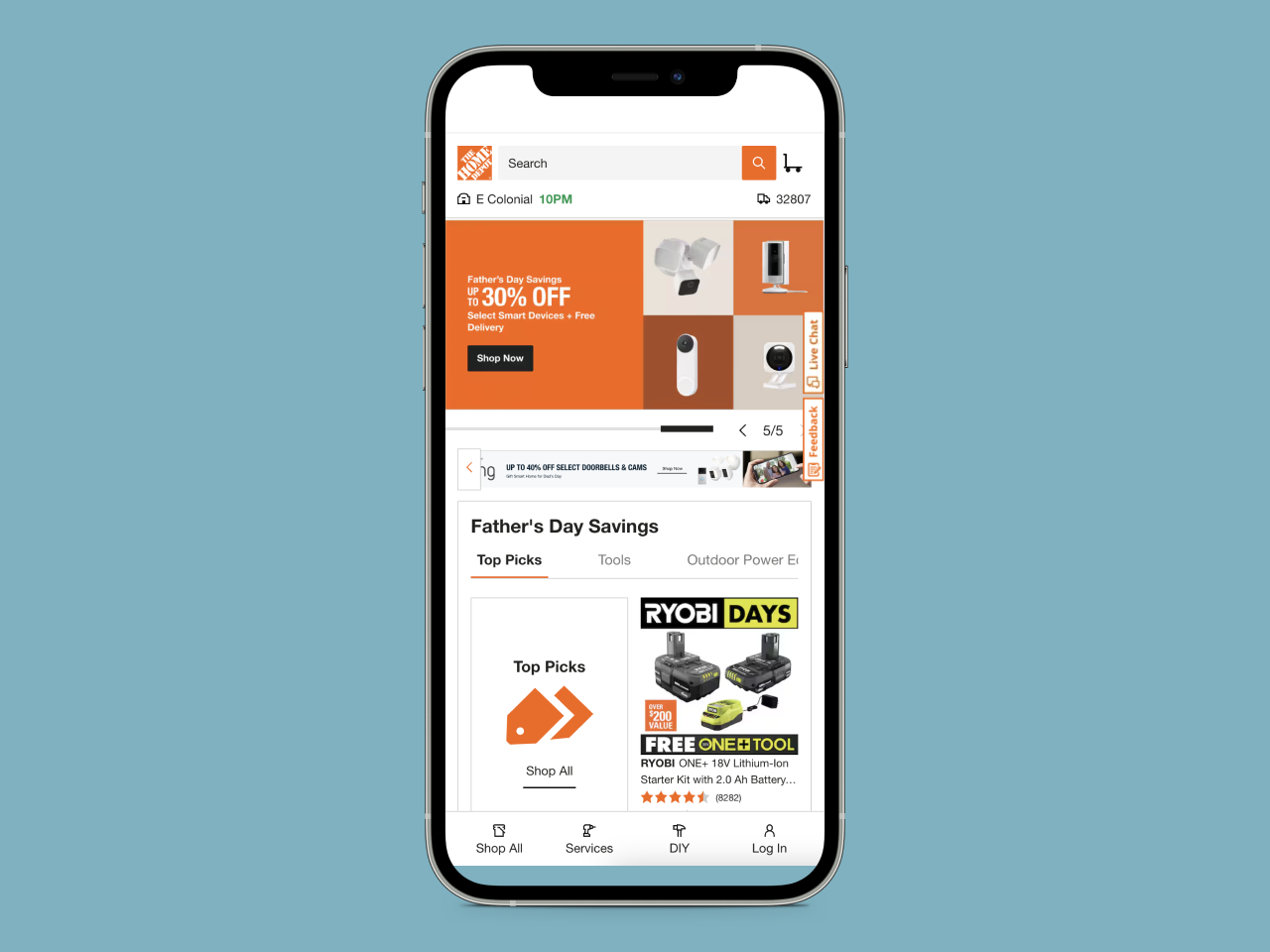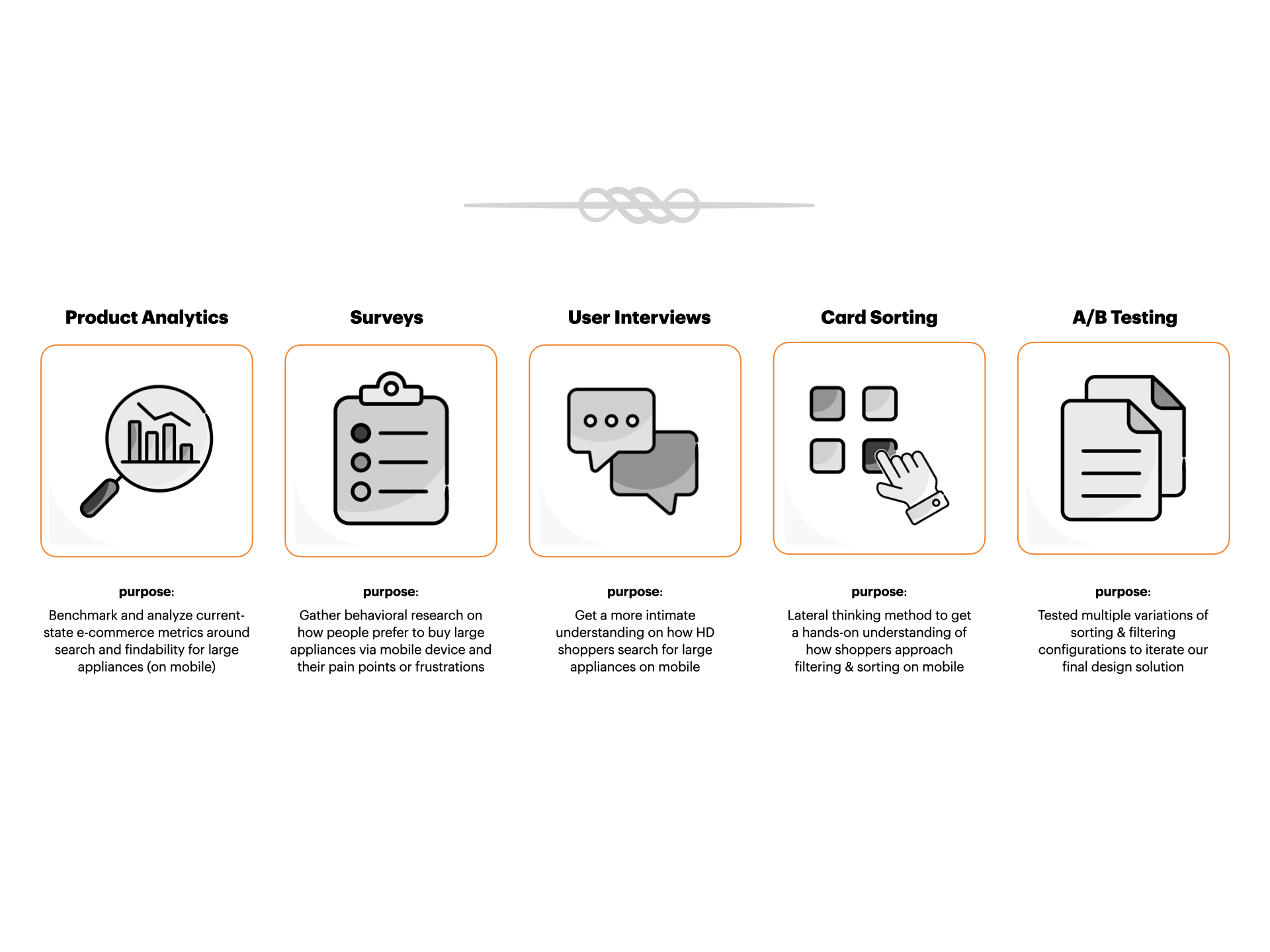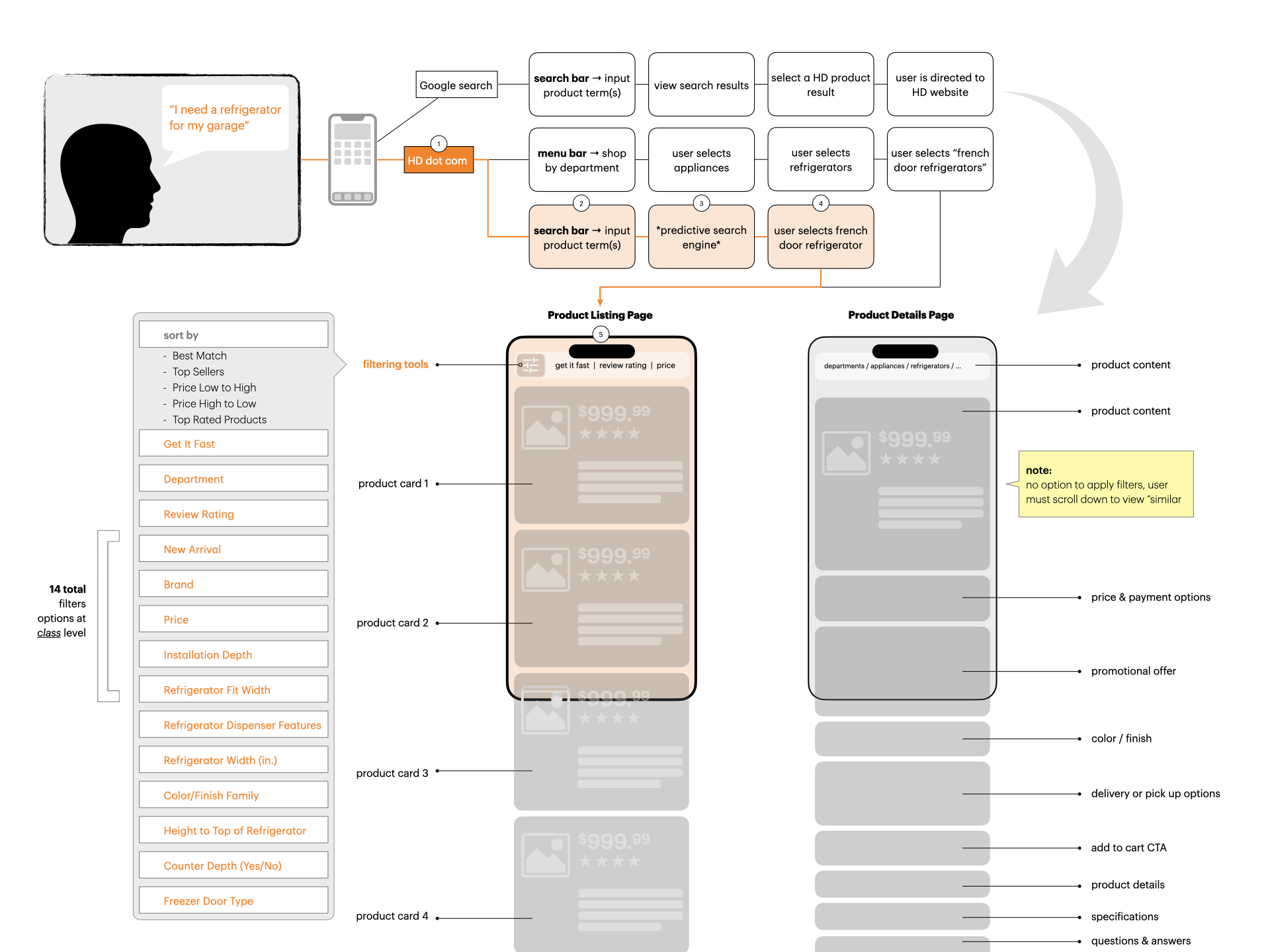[replace with UI animation of user selecting “delivery time frame” filter in HD’s website searching for refrigerator]
Why localized pricing?
Home Depot was embarking on a new supply chain network that gave merchandising managers more flexibility as to what regions and areas to make certain products available and what prices to set for them. The first phase was in ensuring our database, back-end systems, and pricing software was coordinated to ensure this new capability was scalable.
Now it was time to roll-out and merchandising managers needed a way to pilot these new ways or assorting and pricing without causing too much disruption to how customers shopped today on the retailers website.
There were 2 key areas of focus for our design thinking process:
1. For users within a specified region, how could we raise awareness of the benefits of shopping from local vendors & suppliers?
2. For out-of-region users, how could we inform properly inform them of the price changes when they input their zip code?
What We Delivered
enhanced mobile SORTING capabilities to integrate localized pricing & availability
UI audit for current state search experience
The purpose of the UI audit was to assess the current design and configuration of the search experience on mobile. There are 2 benefits for doing this: first, you have a reference point for future designs and iterations to benchmark progress; secondly, it gives the design and product team a baseline understanding of where the immediate opportunities might be and may help formulate a hypothesis to drive the research work.
Initial impression: from a functionality standpoint, the HD mobile search experience contains all the necessary features to help an end-user find what they’re looking for: predictive search, category specific filters, sorting options, and product details and reviews. However, at almost every touchpoint of the search journey, there was some type of marketing or sponsored content that may distract or frustrate the customer.
Research Planning & Applied Methods
Key research insights provided by analytics team
Identifying major use cases & scenarios
Mapping out the user’s search path
Comparing & contrasting different paths for the user
Key Findings & Actionable Insights
01. Customers were not aware that they could get more competitive prices if they bought from local, nearby vendors
02. There was already an existing service within stores (associates only) that would show regional suppliers, vendors
03. For customer-facing UIs (such as website or app), customers did not have a way of including or excluding regional vendors
04. Customers wanted the option to view (“check out”) local vendors available but have a way to go back and see entire selection
05. From a business perspective, HD did not want to restrict product availability by showing only “regional vendors”
How We Iterated our Design Solutions
Phase 1. sdifjsdjfs
Phase 2. dslfksdjfhs
Phase 3. We delivered our final designs for business review & implementation with the following design concepts:
- [Search experience] providing users an additional filter “Show only local, nearby vendors & suppliers” for IN region users and OUT
- [Make aware & inform] how could merchandising managers strategically “advertise” the benefits of this new capability
- [Explainability copywriting] when users encounter price changes due to vendor regional prices upon updating zip code, provide details explaining vendor pricing tiers due to freight costs > further, provide call to action to “view similar products” and/or “show me only nearby vendors”
How did UX contribute to this business goal?
Collect data analytics for online shopper behavior to assess metrics such as: bounce rate, conversation rate (PDP), search exit rate, click-through rate (results page)
Audit existing search experience for mobile users
Perform card sorting activity to learn how prioritized their needs and preferences when searching for large appliances online (e.g., refrigerator) —> public survey with screener questions
Conducted short interviews with customers at stores to get a more intimate understanding of their mental model re: purchasing big-n-bulky items online (results showed that over half
Tested multiple UI configurations to integrate “localized pricing” as a new filtering & sorting method (concept testing with real customers)















